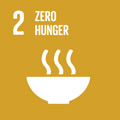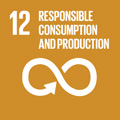- Docente: Lucia Vannini
- Credits: 6
- SSD: AGR/16
- Language: Italian
- Teaching Mode: Traditional lectures
- Campus: Cesena
- Corso: First cycle degree programme (L) in Food Technology (cod. 8528)
Learning outcomes
The principal aim of this course is to give the students
information on the main microbial groups involved in industrial
processes, i.e. the microorganisms responsible for fermentations of
industrial relevance. Hence, students will be given all the
information necessary to manage, optimize and control microbial metabolic activities through biotechnological processes aimed at biotransformation of substrates, raw
food materials and agro-food wastes and by-products into microbial metabolites and fermented foods thus preventing food diseases.
Course contents
Introduction to the course: presentation of the teacher, overview on the aims of the course, the topics addressed, the recommended textbooks, how teaching material is provided to students and how the final examination is carried out.
The topics of the course include both a general part and one focused on some of the main products of industrial microbiology. Also practical lab activities will be performed.
General part
1. A brief introduction to industrial microbiology - brief history, information on microrganisms, industrial and food fermentations.
2. Microrganisms of industrial relevance
- Retrieve the main microorganisms of industrial interest and their metabolic activities: lactic acid bacteria, probiotic microorganisms, acetic acid bacteria, microstaphilococi, yeasts, molds
-Industrial collections of microorganisms, and techniques for their preservation: liquid, frozen, freeze-dried cultures.
- Traditional techniques of selection and improvement of micro-organisms of industrial interest: primary and secondary screening, mutagenesis, final selection.
3. Microbial metabolites
- Primary and secondary metabolìtes: types, characteristics and kinetics of production.
- Control and regulation of microbial metabolism: mechanisms of inhibition and repression by feed-back of linear and branched metabolic pathways.
- Strategies for the accumulation of microbial metabolites: modulation of the composition of the fermentation substrate; changes in cell membrane permeability; metabolic block; removal of inhibition/repression mechanisms.
4. Biotecnology of fermentations
- Substrates for industrial fermentations: the main ingredients used as raw carbon sources (e.g. molasses, whey, spent sulphite liquor, agricultural wastes, starch,..) and nitrogen sources (e.g. vegetable flours, corn steep water, yeast extract, peptone,..), vitamins and growth factors, oils, fats, anti-foam and surfactants.
- Bioeconomy and circular economy: definition and main characteristichs; - Use of biomasses and agro-food wastes and by-products as feedstocks for the production of microbial biomasses and "bio-based products"; Biorefineries and some examples of bio-based products produced by bacteria or yeasts.
- Main criteria for the classification and differentiation of industrial fermentations: type of products, kinetics of production, methods of cultivation and fermentation technology.
- Types of fermentations: type I, II and III. Dynamics of microbial growth and production of metabolites.
- Technology of microbial cultivation: solid state fermentation, superficial or submerged fermentations. Main characteristics, pro and cons, examples of use.
- Fermentation Technology: batch, fed-batch, continuous fermentations. Main features, critical aspects and benefits.
- Mathematical modelling of microbial growth, metabolites production and substrate consumption.
- Industrial fermenters: main features and control parameters. Classification of bioreactors according to the aeration and stirring systems. Main characteristics of the fermenters with a mechanical stirring (stirred tank reactor), pneumatic stirring (air lift, bubble column), hydraulic stirring, packed or fluid bed reactors.
- Sterilization of fermenters and substrates. Simultaneous or separate sterilization. Continuous or batch processes. effectiveness of sterilization calculation.
5. Immobilization techniques - Procedures for passive immobilization (aggregation, adsorption and colonization) and active immobilization (covalent bonds with the matrix, cross-linking, microencapsulation) of enzymes or microbial cells. Advantages and disadvantages of immobilization. Fermenters for immobilized microbial cells. Examples of industrial use of immobilized mirobial cells/enzymes.
Main products in industrial microbiology
1. Fermented foods - Main characteristics, natural/spontaneous or guided fermentations. Microbial starter cultures: definition, classification, role and criteria for their selection.
2. Dairy products: yoghurt, fermented milks and cheeses. Definition, types and main characteristics. Role of the various microbial starters and natural microbiota in the biochemical changes that characterize fermentation and/or ripening.
3. Bakery products - direct and indirect bakery technology. Types of biological leavening agents - bakery yeast and sourdough - and their role in breadmaking. Sourdoughs: type I, II and III ; main features, dominant microbiota and their effects on the characteristics of leavened baked products.
4. Fermented cured meats: definition, characteristics and classification. Evolution of the microbial population in relation to the characteristics of the matrix and to the phases of the production process. Role of starter cultures in primary fermentation. Biochemical changes during the ripening phase.
5. Microbial biomasses - Bakery yeast, starter and non starter microbial cultures: main characteristics in relation to their use. Yeasts for bakery industry: metabolic aspects, substrate and conditions of fermentation, recovery and storage conditions.
6. Microbial metabolites - General characteristics and classification criteria, mechanism of biosynthesis and factors affecting the production kinetics.
- Exopolysaccharides (EPS).
- Citric acid.
- Examples of "bio-based products" produced from biomasses.
Practical activities
Laboratory work related to the: (i) primary screening of microorganisms of industrial interest; ii) recovery and growth of microbial starters; iii) choice of microbial starters for food fermentation in relation to their technological features; iv) effects of different raw carbon sources on the growth of starter cultures; v) production of exopolysaccharides in relation to the carbon sources; vi) production of bioethanol from agro-food wastes and by-products.
Classroom exercises on: i) analysis of the experimental data collected during the lab activities and plot graphs through excell; ii) exercises on mathematical modeling of microbial growth, production of metabolites or microbial biomasses in relation to the fermentation technology; iii) surfing the web sites on international collections of microbial cultures.
Readings/Bibliography
- Manzoni Matilde "MICROBIOLOGIA INDUSTRIALE", Casa Editrice
Ambrosiana
- Farris G.A., Gobbetti M., Neviani E., Vincenzini M.
"MICROBIOLOGIA DEI PRODOTTI ALIMENTARI", Casa Editrice
Ambrosiana
- Lecture notes provided by the teacher through the https://virtuale.unibo.it/ platform.
- Papers on specific topics suggested by the teacher
Teaching methods
Class lectures, laboratory practises, seminaries held by food
sector experts, guided tours to food production plants.
Assessment methods
The final evaluation will be based on a written test and an oral
presentation.
As far as the written test, no lecture notes, books, PC, internet
connection is allowed during the text. The maximum time available for the test is
150 minutes. The test consists of different types of questions including open questions, multiple choiche questions, mute figure,
exercises, definitions.... Overall the written text aims at the evaluation of the knowledge
of the topics taught during the class lectures. Also the
ability to solve some of the problems faced during practice
exercises and laboratory activities will be evaluated. Scores will be clearly reported in the text close to each question. The written test is passed provided that a score of at least 18 points is reached.
As for the oral presentation, it consists of a power point presentation on a case study (e.g. microbial metabolites, fermented food, ...) chosen by students and approved by the teacher.
The final mark of the course unit of "Industrial Microbiology" will be based both on the evaluation of the oral presentation and the written test.
Due to the current COVID-19 outbreak, the examinations will be held in presence or through Microsoft Teams in compliance with the measures to limit its spread.
The final evaluation of the course of "Food Microbiology" will be the arithmetic mean of the marks of the two course units "Food Microbiology" and "Industrial Microbiology".
Teaching tools
Slides of the lectures and training activities in the laboratory of food microbiology will be available for all the enrolled students as pdf files through the web-site: "Virtual Learning Environment"
Office hours
See the website of Lucia Vannini
SDGs



This teaching activity contributes to the achievement of the Sustainable Development Goals of the UN 2030 Agenda.
